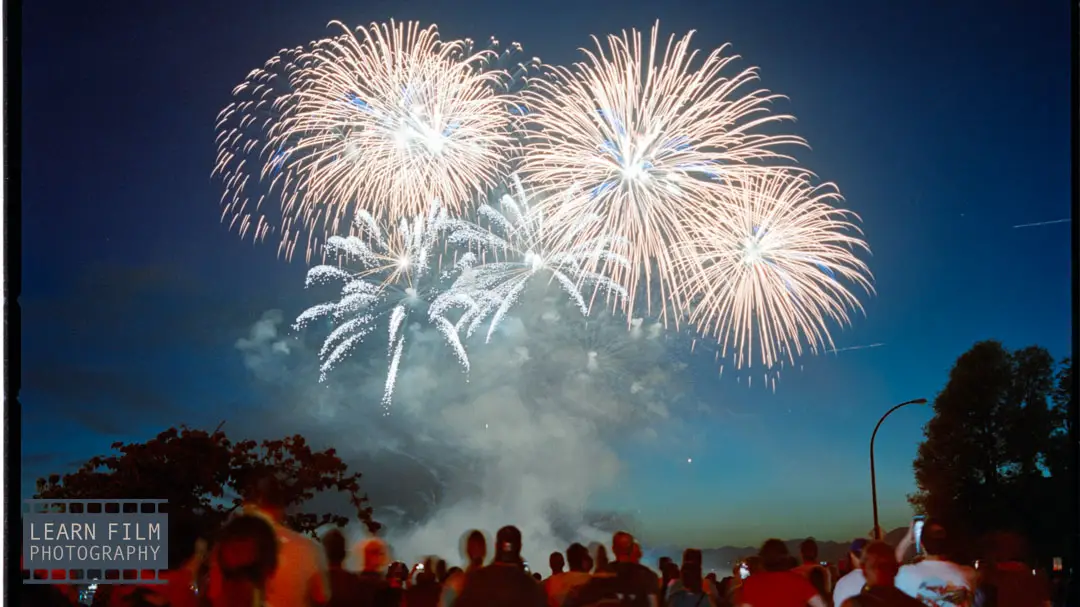Shutter releases are exceptionally useful tools for film photographers who use a manual film camera. They’re also one of the cheapest accessories on the market, making a shutter release is a must-have item for taking better photos in low light.
A mechanical shutter release will allow you to trigger the camera’s shutter without having to touch the shutter button, which can shake the camera, and it will enable you to effectively use bulb mode for long exposures.
I’ve been taking photos on both film and digital cameras for 10 years now, and no matter how hard I try, I have never been able to press the shutter button without the camera moving — even when it’s locked down on a sturdy tripod.
Find the shutter release I use on Amazon here.
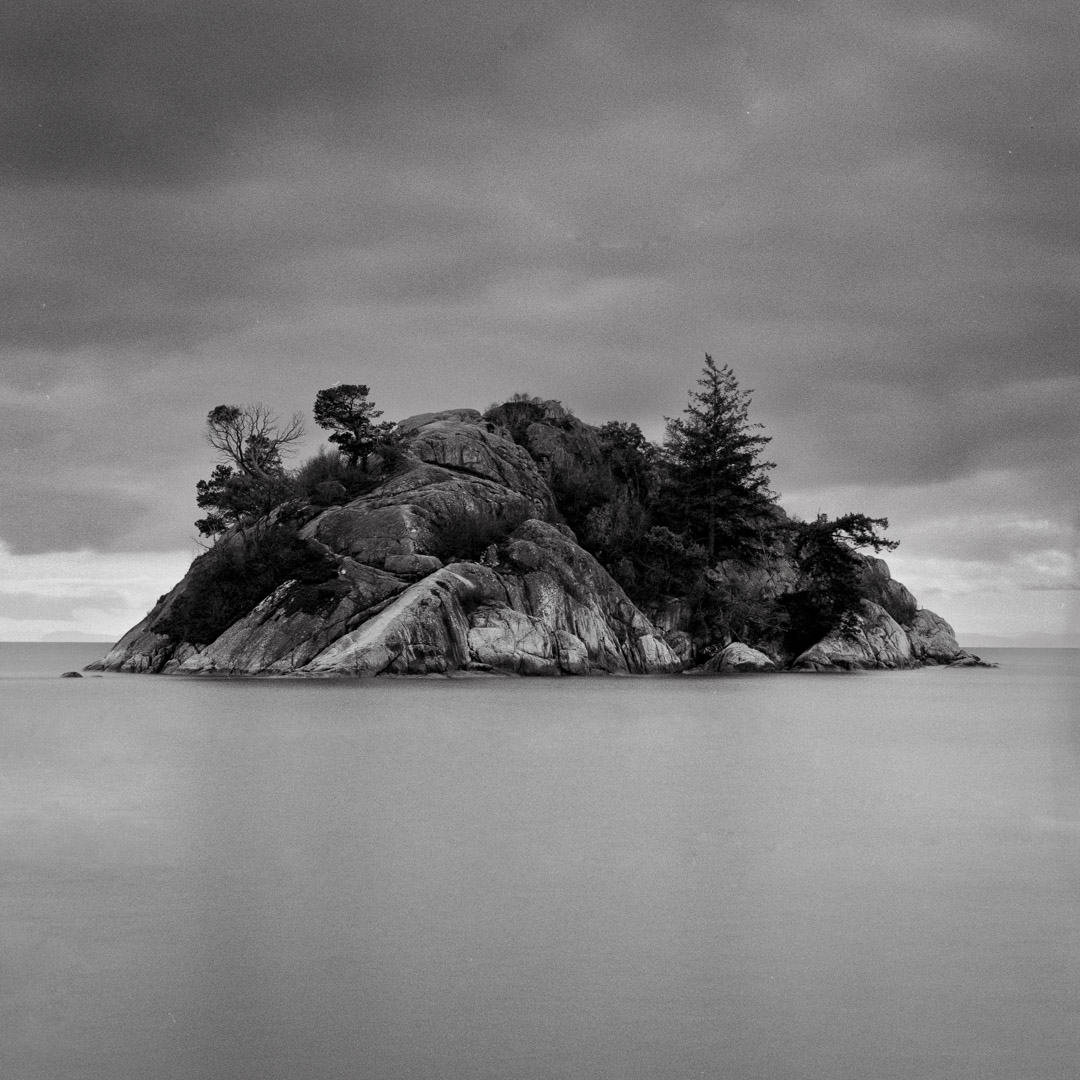
When should I use a shutter release?
Shutter releases are useful for creating sharp images anytime your shutter speed is below the reciprocal rule for taking sharp photos handheld.
The reciprocal rule is that your shutter speed should be at least as fast as the focal length on your lens. If you’re using a 50mm lens, then the shutter speed should be at least 1/50th of a second, or 1/125th when using a lens between 85mm and 135mm.
In practice, the best measure is to always have your camera on a tripod or hard surface when you need a slower shutter speed than the focal length of your lens (within reason). I start using the shutter release whenever my shutter speed dips below 1/8th of a second, as at these speeds, that extra camera shake can ruin your image sharpness.
Long exposures are one of the best ways to create incredible black-and-white images on film, and having a cable shutter release will make it possible to capture sharp long exposures.
Some film cameras also have a mode called mirror lockup, which moves the mirror up so that it itself doesn’t cause the camera to move when the shutter is released.
Mirror lockup is a lifesaver when you’re creating exposures that are longer than a half second — the only downside is that you have to set everything in the camera before using mirror lockup, as you won’t be able to see through the viewfinder when it’s engaged.
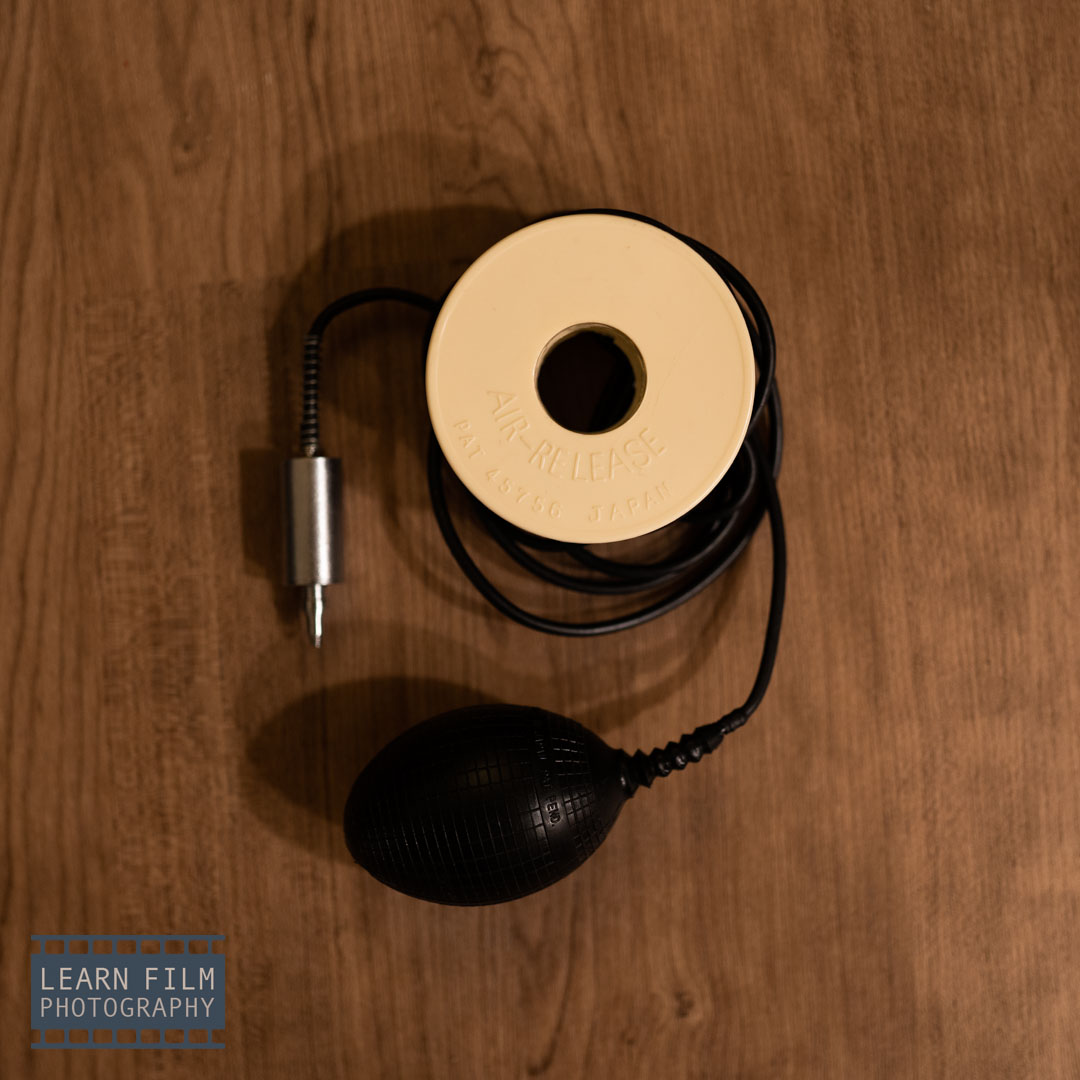
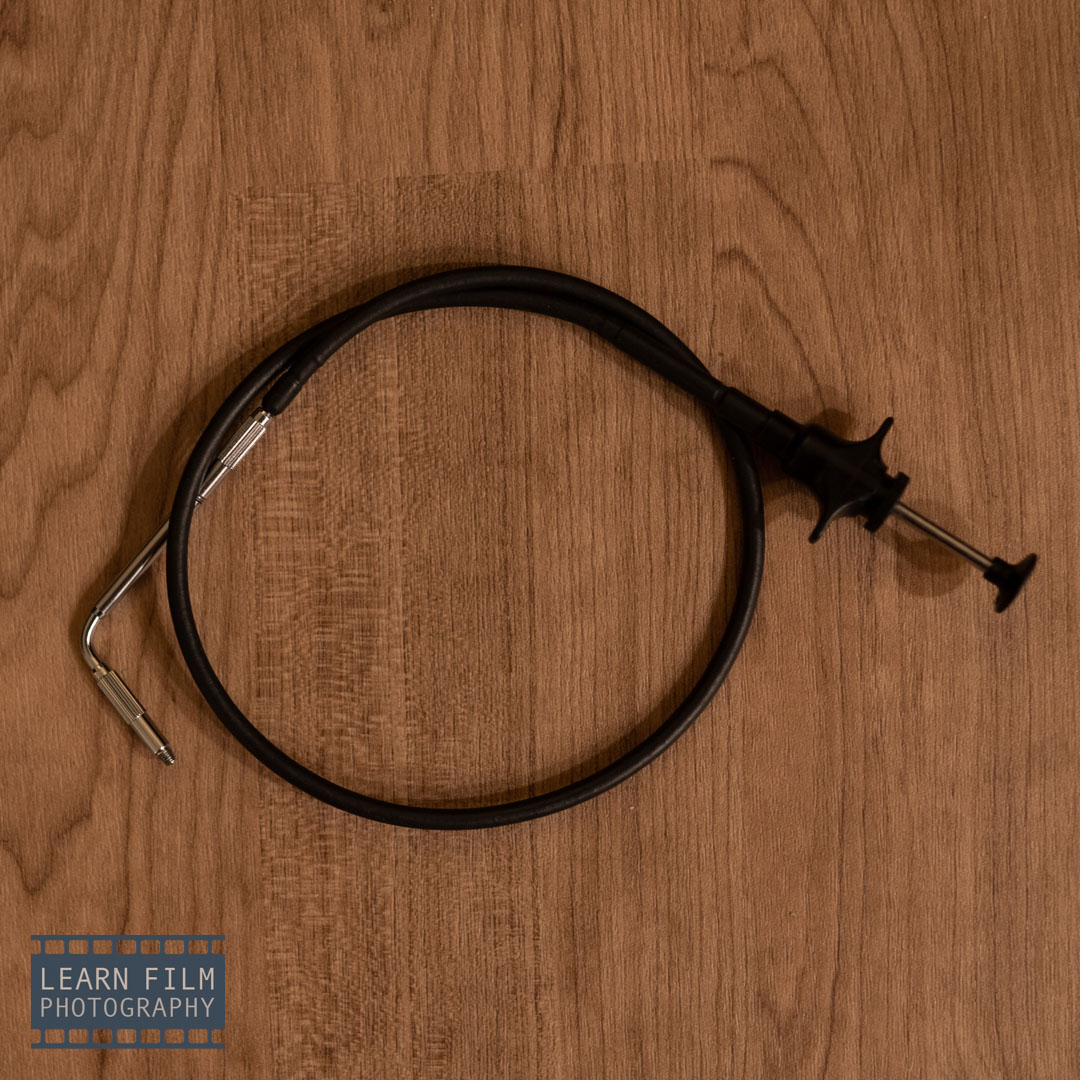
What kind of mechanical shutter releases exist?
There are two main kinds of shutter releases and a third niche variety.
The most common, and cheapest, the shutter release is a long, flexible cable between 20 and 40 inches (50-100cm) in length, with a plunger on the top and a locking mechanism. Simply press down on the plunger with your thumb, and then release the lock when your long exposure is finished.
The next type is an air shutter release, meant for taking self-portraits in a distance, using a rocket blower-type bulb to push enough air through the tube to push the shutter release pin into the camera. Air shutter releases are typically about 20 feet (6 meters) in length, making them great for taking self-portraits with friends and family.
The most niche type of shutter release is a remote shutter release built for film cameras by Reveni Labs in Canada. This one is a battery-powered Arduino unit that can trigger the shutter using a remote from up to 330 feet (100 meters) away! It’s not for everyone, but it can be useful for someone who wants to capture those epic landscape self-portraits from a distance.
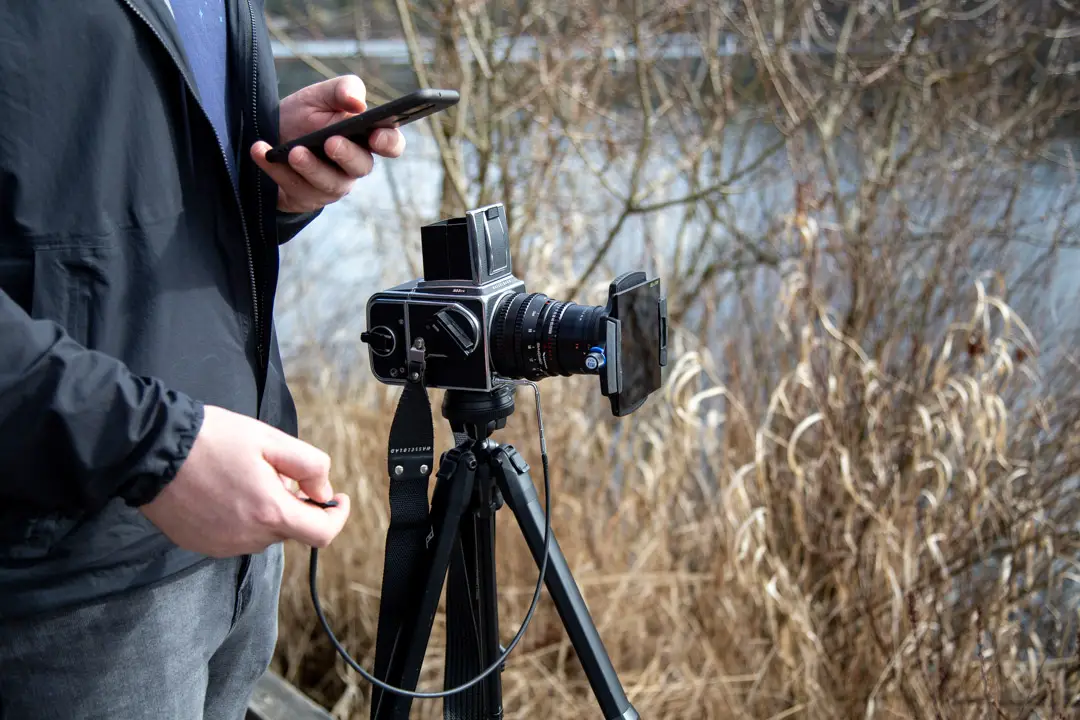
Are all film camera shutter releases standard?
Shutter releases for all manual film cameras are standardized, meaning you can use any brand of shutter release in any manual film camera.
The shutter release is often threaded inside the camera’s shutter button.
However, many of the modernized film cameras, like the EF mount Canon film cameras, and most point and shoots do not support the use of a manual shutter release.
There are only a few instances where a normal mechanical shutter release won’t fit, and that’s on system cameras where the shutter button is very close to the lens.
Older Hasselblad cameras especially have gigantic lenses that can block a standard release. In that case, you will need to purchase an angle adapter to use the shutter release.
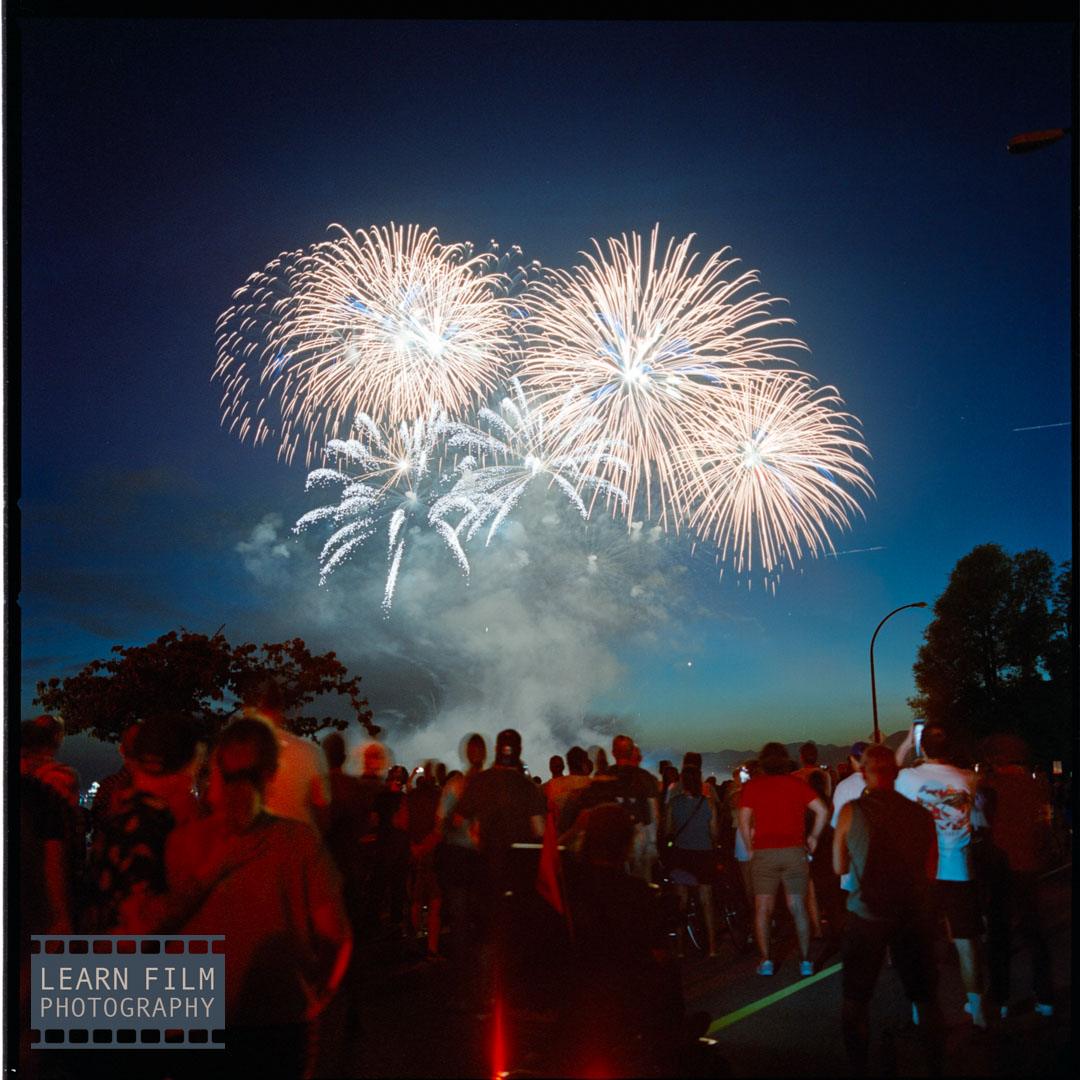
Can I just use a self-timer instead of a shutter release?
Many film cameras come with a self-timer as well. Whether it’s digital, or a dial on the lens, the self-timer function can often replace the need for a shutter release.
There are a few instances where a shutter release is better, though. For example, if you’re using bulb mode, the release will allow you to control the length of the exposure for an unlimited amount of time, whereas, without it, you’ll still have to hold the shutter in.
The shutter release will also allow you to properly time your photographs. For example, if you’re taking photos of fireworks, having a shutter release will often be the difference between timing the photo just right and a near miss.

By Daren
Daren is a journalist and wedding photographer based in Vancouver, B.C. He’s been taking personal and professional photos on film since 2017 and began developing and printing his own photos after wanting more control than what local labs could offer. Discover his newest publications at Soft Grain Books, or check out the print shop.

